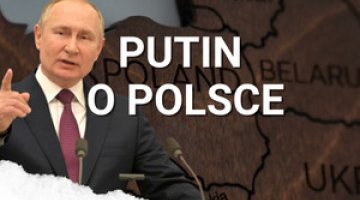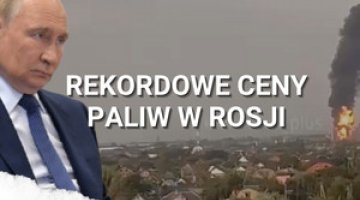Russia’s attack on Ukraine: day 120

During the night, Ukrainian forces began withdrawing from Sievierodonetsk and crossed the Donets River under fire to Lysychansk (the bridges connecting the two cities were destroyed, and there is no possibility of retreat in the other directions). According to the head of the military-civil administration of the Luhansk Oblasts, Serhiy Haidai, the soldiers were ordered to abandon their last positions in the industrial area (Azot plant). The defenders are repelling attacks on Borivs’ke south of Sievierodonetsk and on the southern outskirts of Lysychansk (in the area of the Myrna Dolyna settlement occupied by the enemy), but are being pushed back from there to the south-west of the city (near the border with the Donetsk Oblasts the invaders took the Mykolayivka locality, which had been defended for many days). The aggressor’s troops were also about to enter the encircled Hirske and Zolote. The Ukrainians held off attempts to advance on the south-eastern outskirts of Bakhmut (near the village of Klynove), as well as north of Sloviansk (in the Bohorodychne-Dolyna area) and on Marinka west of Donetsk. A Russian diversion to the rear of enemy troops in the north-western part of the Kherson Oblasts was to fail.
The aggressor’s artillery and air force hit the defenders’ positions and facilities along the entire contact line. In addition to the Donbas, the attacks included Kharkiv and localities south and east of it, three regions south of Kryvyi Rih, localities on the outskirts of Zaporizhzhia or on the border of the Mykolaiv and Kherson oblasts. The shelling of border areas in the Chernihiv and Sumy oblasts continues. In the Kharkiv region, between Mykolaiv and Kherson, and in the Donbas, Russian actions are met with a counterattack by Ukrainian artillery and aviation.
Washington has announced that an additional $450 million package of military support will include more HIMARS multiple rocket launchers, tens of thousands of rounds of ammunition and coastal patrol vessels. The arrival of the first batch of launchers in Ukraine was announced by Defence Minister Oleksiy Reznikov. Sixty soldiers have been trained to use them. Ukraine’s ambassador in Berlin Andriy Melnyk announced that the Ukrainian army would receive IRIS-T anti-aircraft systems (probably 10 of them) within the framework of the contract with Diehl Defence (worth EUR 178 million, the cost is to be borne by Germany).
Deputy Defence Minister Hanna Maliar’ presented details of the system of Western control over the process of supplying Ukraine and its use of transferred armaments and military equipment. Kyiv must comply with US and EU requirements in this regard, and failure to meet its obligations risks withholding supplies. Maliar’ also called for the non-publication of information that undermines the country’s image as a reliable partner and arms consumer and described it as Russian sabotage.
According to UK Defence Minister Ben Wallace, the West does not have enough ammunition to support the Ukrainian army in a prolonged war. Kyiv has so far received nearly 300,000 artillery ammunition, which at a rate of fire comparable to Russia’s (taking into account the disproportion in the number of artillery pieces) will last for 40 days. Its replenishment after that date will not be possible due to the depletion of allied stocks. The British authorities were to begin talks with industry on increasing the rate of munitions production.
The General Staff of Ukraine has stated that Belarus plans to transfer reserves of military equipment to the Russian army. Work is being carried out at Belarusian reserve storage bases to restore the conserved equipment to combat use. According to the Ukrainian military, it will supply the aggressor units fighting in the east and south of Ukraine. Attention was also drawn to the construction of military infrastructure at the Zyabrovka airfield in the Gomel Region, which is likely to be made available to the Russian air force. There is now a threat of resumption of the use of Belarusian territory and airspace for missile attacks and the metastasis of sabotage and reconnaissance groups into Ukrainian territory, primarily to sabotage logistical support routes. Once again, it was stressed that Minsk does not have sufficient forces and resources to carry out a large-scale offensive on its own.
Ukrainian authorities report constant activity of enemy agents working for Russian military reconnaissance. In Kyiv, two Ukrainian citizens were detained transmitting geolocation data of railway infrastructure facilities and checkpoints on roads leading to the city. In early June, the head of the Kyiv regional military administration, Oleksiy Kuleba, decided to intensify curfew enforcement due to the high activity of Russian sabotage groups.
The State Border Service of Ukraine revealed that since the beginning of the aggression, about 5,000 men have attempted to illegally leave the country – 3,500 were detained by border guards in places where there are no checkpoints, and more than 1,000 wanted to cross the border using forged documents. The procedure of smuggling men continues and has become a new form of crime.
According to information obtained by the Special Operations Forces of Ukraine, the Russians intend to hold so-called referendums on 11 September on the further future of the occupied Kherson and Zaporizhzhia oblasts. These plans continue to meet with resistance from the population. The staff shortage is attempted to be solved by rotating, month-long delegations of officials from Russia. A constant threat to the occupation authorities is the activity of Ukrainian sabotage groups. The head of Ukraine’s military intelligence has conveyed that an extensive partisan network is active in the Kherson Oblast. The collaborationist authorities admitted that in recent days several assassinations have been carried out against persons co-operating with the Russians. In Chornobaivka the car of the collaborationist head of the administration Yuri Turulov was blown up and slightly wounded, the car of Oleksiy Kovalev, an MP cooperating with the invaders, was shot at, and in Kherson an activist of the New Russia organisation was killed. Leaflets warning collaborators that they could be attacked by ‘Ukrainian partisans’ are being distributed in the occupied areas.
The European Council at an EU summit in Brussels condemned Russia’s actions in blockading Ukrainian ports on the Black Sea and thus preventing grain exports from the invaded country. Member states blamed Moscow unilaterally for triggering the world food crisis and called on it to immediately stop attacks on agricultural facilities and allow grain to be shipped out of Ukrainian ports, especially Odesa. The Union also supported the involvement of the UN Secretary in solving the problem.
Commentary
- The statement by the British defence minister is the first official admission by one of Ukraine’s major donors that the West is not prepared for a prolonged war. Previously, the depletion of stocks of ammunition and portable missile systems, as well as post-Soviet armaments and military equipment at the disposal of NATO countries, was reported in the US media. The situation outlined by Wallace is the consequence of the reduction of military potential, which has been common in the West for many years, and the transformation of the armed forces towards structures designed to take part primarily in multinational operations, where the enemy was to be mainly irregular armed formations. Such decisions were taken in the months immediately preceding the Russian attack on Ukraine (for example, the United Kingdom planned a further reduction in the number of its ground forces), and the allied response to Moscow’s growing aggressiveness was symbolic (multinational battalion combat groups on NATO’s eastern flank).
- In this situation, the West’s care for the fate of the arms transferred to Ukraine and the restrictions imposed on Kyiv in terms of their use are dictated not only by fears of an escalation of the conflict, but also by an awareness of the limited resources at its disposal. As the invasion drags on, the West is faced with the choice of increasing pressure on Ukraine to force concessions from Russia in the hope of ending the war diplomatically, or quickly intensifying arms production so as to be able to continue supporting Ukrainian military operations. The supplies supplied to date only allow the army of the invaded country to replenish some of its losses and do not stand a chance of stopping the aggression, let alone ousting the enemy.
- The effectiveness of counterintelligence activities undertaken by the Ukrainian special services is growing in importance. The protracted armed conflict has intensified the activity of Russian agents deep inside the country, who support the reconnaissance capabilities of the aggressor’s army. A particularly dangerous form of this activity is the transfer of precise geolocation data, which makes it possible to carry out precise missile strikes. The threat of agent activity remains high, and the Russian special services continue to acquire new collaborators, including among those who have moved from the eastern to the central and western regions of Ukraine. The invaders, attaching great importance to the reconnaissance of enemy forces, military equipment depots and railway infrastructure, will continue missile attacks, hoping to paralyse the transport of arms and units of the Ukrainian army to the front.





